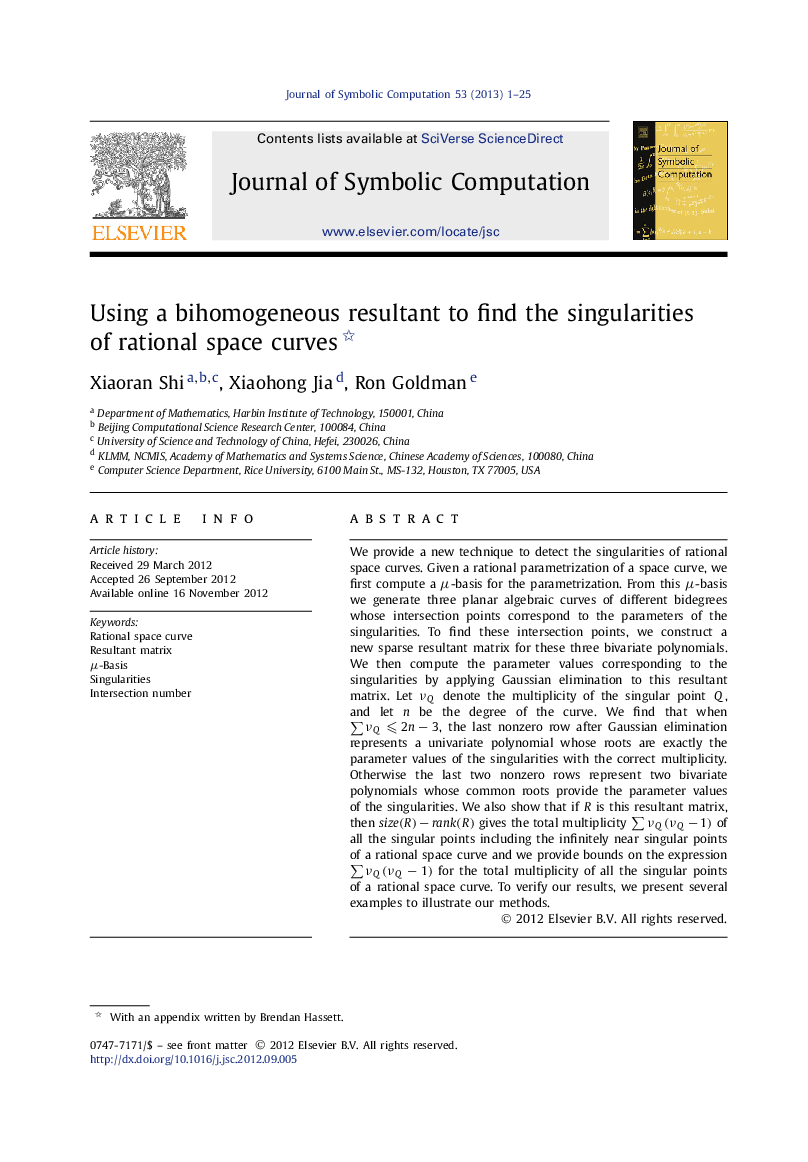| کد مقاله | کد نشریه | سال انتشار | مقاله انگلیسی | نسخه تمام متن |
|---|---|---|---|---|
| 401774 | 676161 | 2013 | 25 صفحه PDF | دانلود رایگان |

We provide a new technique to detect the singularities of rational space curves. Given a rational parametrization of a space curve, we first compute a μ-basis for the parametrization. From this μ-basis we generate three planar algebraic curves of different bidegrees whose intersection points correspond to the parameters of the singularities. To find these intersection points, we construct a new sparse resultant matrix for these three bivariate polynomials. We then compute the parameter values corresponding to the singularities by applying Gaussian elimination to this resultant matrix. Let νQ denote the multiplicity of the singular point Q, and let n be the degree of the curve. We find that when ∑νQ⩽2n−3, the last nonzero row after Gaussian elimination represents a univariate polynomial whose roots are exactly the parameter values of the singularities with the correct multiplicity. Otherwise the last two nonzero rows represent two bivariate polynomials whose common roots provide the parameter values of the singularities. We also show that if R is this resultant matrix, then size(R)−rank(R) gives the total multiplicity ∑νQ(νQ−1) of all the singular points including the infinitely near singular points of a rational space curve and we provide bounds on the expression ∑νQ(νQ−1) for the total multiplicity of all the singular points of a rational space curve. To verify our results, we present several examples to illustrate our methods.
Journal: Journal of Symbolic Computation - Volume 53, June 2013, Pages 1-25